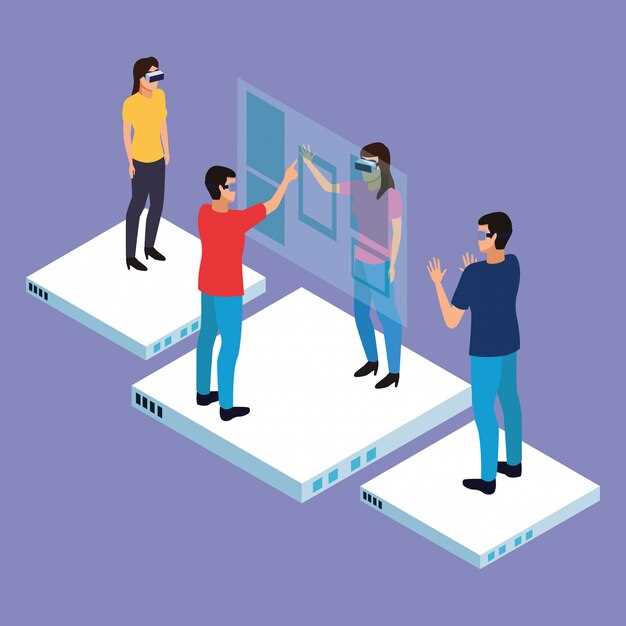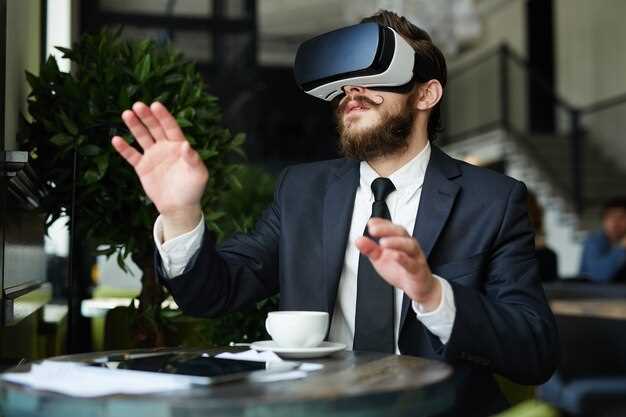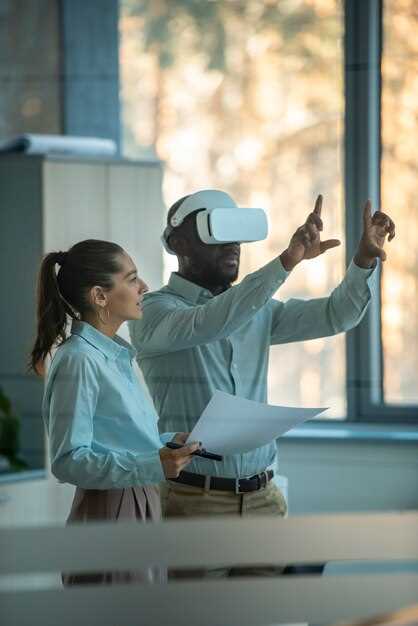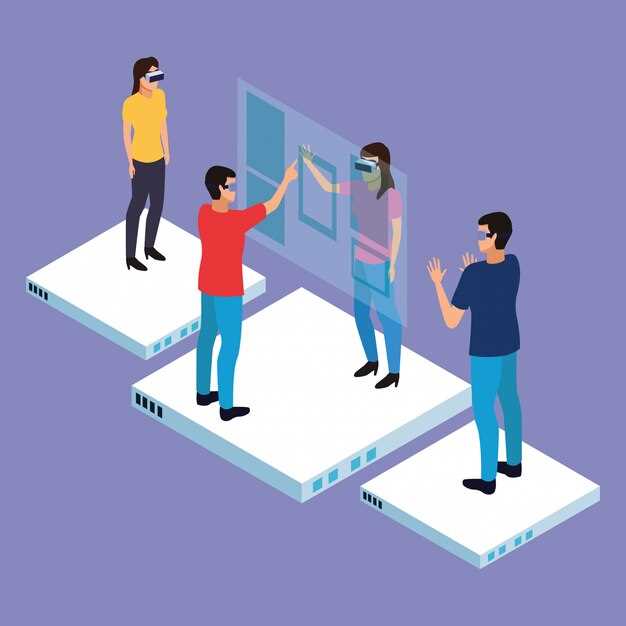
In a world increasingly connected by technology, the way we gather is evolving. Traditional formats are being challenged by innovative approaches that bring people together in new and exciting dimensions. The shift has created opportunities to deepen engagement and interaction.
Many participants crave an experience beyond passive observation. They seek involvement and immersion in their surroundings. This desire sparks the imagination, prompting creators to explore uncharted territory. As a result, we witness the merging of real and digital realms, leading to enriched interactions.
This fascinating blend offers a unique canvas for individuals and organizations alike. By leveraging interactive elements, attendees become co-creators of their experience, fostering a sense of presence and connection that transcends physical boundaries. The narrative of gatherings is being rewritten, infusing them with vibrancy and dynamism.
As we delve deeper into these advancements, it’s essential to examine the myriad ways in which innovative technologies can transform how we communicate and collaborate.
Enhancing Virtual Events with Augmented Reality

Immerse yourself in a world where physical and digital realms unite seamlessly. This innovative approach brings a refreshing twist to traditional gatherings. Participants can now experience a blend of the real and the imagined. Engaging with content has never felt so interactive.
- Dynamic presentations come to life like never before.
- Attendees can explore immersive environments from anywhere.
- Networking gains a new dimension through enhanced interactions.
- Workshops become engaging adventures rather than ordinary lectures.
As individuals and organizations seek to connect in meaningful ways, the integration of cutting-edge technologies plays a pivotal role in creating memorable interactions that resonate far beyond the screen. The infusion of this technology into the format allows for unique storytelling, captivating visuals, and a sense of presence that was previously unattainable.
- Imagine participating in panels where speakers appear right in front of you.
- Visualize engaging with 3D models that augment your understanding of complex topics.
- Picture a scenario where attendees can explore products with their devices.
- Think about the possibilities: real-time feedback and interaction create vibrant discussions.
Utilizing the capabilities of immersive technology enables facilitators to foster collaboration, inspire creativity, and cultivate connections that enhance overall satisfaction. Every detail contributes to an enriching experience that captivates and inspires, leading to a future where participation is a thrilling adventure.
The Future of Conferences Through AR

As we look towards the horizon, the landscape of gatherings is set to change significantly. The integration of advanced technologies promises a more immersive experience for participants. Attendees will eagerly connect and collaborate in ways never seen before. Enhanced interactions will be commonplace. With innovation at the forefront, the potential is limitless.
Imagine walking through a space filled with interactive elements that respond to your presence. Visual aids and digital companions will become integral to the overall experience. Every session can offer unique visualizations, ensuring that information is conveyed not just through words, but also through rich, engaging imagery that captivates the audience’s attention. The ability to seamlessly blend physical and digital worlds will create tailored experiences for diverse audiences.
Connections will flourish beyond traditional boundaries. Speakers might engage with individuals across the globe in real-time, while participants can explore rich layers of information at their fingertips. With a simple gesture, one could access a wealth of resources, making learning both dynamic and effective. This integration allows for a fluid interaction between knowledge and community engagement.
Moreover, feedback mechanisms will evolve. Participants can instantly share their thoughts through interactive platforms, providing insights that drive future enhancements. The collective intelligence of the audience becomes a powerful tool for organizers. Data analytics will be employed to refine experiences, ensuring that content remains relevant and exciting.
The journey ahead is full of promise. By embracing innovation, we reshape the way knowledge is shared and connections are formed. As a result, we step into an era where engagement is as rich as the content presented. The potential to communicate, learn, and connect is boundless. Truly, this new chapter invites everyone to be a part of this transformative adventure.
Transforming Attendee Experiences
The landscape of engagement for participants is shifting dramatically. With innovative technology, interactions are more immersive. Attendees now expect dynamic, memorable experiences. Their preferences are evolving, driven by the digital age.
New dimensions have emerged, altering the way content is consumed. Enhanced connectivity fosters richer discussions and deeper understanding. Instead of passive observation, individuals can actively contribute and engage.
Imagine walking into a space where information comes alive, tailored to your interests, pulling you into the narrative rather than observing from a distance.
In this context, unique opportunities arise to bridge gaps between knowledge and experience, transforming mere attendance into genuine participation.
Participants can navigate through information and connect across various platforms, exchanging insights that enhance their personal and professional growth. This fusion of technology and human interaction sparks creativity and collaboration.
The expectations of attendees are now higher than ever before. Innovation becomes not just a novelty, but a necessity to captivate and sustain interest.
With an emphasis on personalization, individuals feel valued. When people are engaged in meaningful ways, they are more likely to remember the experience and apply what they’ve learned. This shift paves the way for a more connected and involved community.
Ultimately, reimagining the attendee journey is about creating lasting impressions and forging deep connections.
Seamless Integration of AR Technologies
The smooth incorporation of cutting-edge technology into various platforms can significantly change user experiences. This digital transformation allows for the melding of physical and digital realms. With new possibilities emerging, creators are tasked to tear down barriers that once separated these environments. Exciting innovations attract participants and enhance their engagement.
Incorporating such technology requires careful planning and execution. Here are key factors to consider:
- User Experience: Ensure intuitive navigation for smooth interaction.
- Device Compatibility: Design tools that function across various gadgets.
- Content Relevance: Provide meaningful information tailored to the audience.
- Performance Optimization: Minimize lag for an enjoyable experience.
Despite potential challenges, the merging of these diverse tech facets fosters unique interactions that can captivate users and create unforgettable moments. Collaborative efforts among tech experts, designers, and event organizers form the foundation for successful integration that invites exploration and boosts participation.
With thoughtful strategies in place, the collaboration will yield memorable outcomes. This is where imagination meets technology, culminating in experiences that can leave a lasting impact. As advancements continue, the dynamic nature of this integration will keep participants engaged.
Case Studies of Successful AR Implementations
Numerous organizations are harnessing innovative technologies to create immersive experiences. The integration of digital elements has transformed the way participants engage with content. Interactive sessions captivate audiences like never before. Various instances illustrate the shift towards more engaging and informative experiences.
One notable example is a global tech company that held a product launch showcasing new features through interactive holograms. Attendees could visualize product designs in real-time, interacting with the models as if they were physical objects. This remarkable approach significantly elevated user understanding and interest.
Another impressive case involves a renowned educational institution that utilized interactive simulations. Students participated in real-world scenarios through immersive content. By incorporating graphic overlays, complex information became more digestible and appealing. The interactive platform allowed enhanced comprehension, making learning enjoyable and effective.
In the entertainment industry, a famous festival incorporated immersive layers into their programming. Attendees experienced unique storytelling methods, blending live performances with digital enhancements. The result was an unforgettable ambiance that seamlessly fused technology with artistic expression.
These instances demonstrate the potential of new technologies to reshape interactions. By crafting unforgettable experiences, organizations can leave lasting impressions on their audience. Truly, the future of engagement lies in innovative adaptations that captivate and resonate with participants. It is essential to explore these transformative possibilities further.
Challenges and Solutions in Adoption
The integration of innovative technologies into gathering formats presents its own unique set of hurdles. Stakeholders often face skepticism about the benefits. Costs can escalate unexpectedly, leading to budgeting dilemmas. Users may struggle to navigate new tools effectively, which can discourage participation. Moreover, the rapid pace of change can be overwhelming for some organizations.
In adapting to these advancements, organizations must also consider their audience’s readiness for transition. Some participants may find the shift too abrupt, which may negatively impact engagement levels. This creates a need for comprehensive training programs and support resources to aid users in familiarizing themselves. Additionally, addressing technical challenges is crucial to ensure a seamless experience.
| Challenge | Solution |
|---|---|
| Skepticism among stakeholders | Conduct informative sessions highlighting benefits and success stories. |
| Unexpected costs | Create a detailed budget plan including all necessary components. |
| User navigation difficulties | Implement training sessions and create user-friendly guides. |
| Technical challenges | Engage expert support for setup and troubleshooting. |
Ultimately, by recognizing these complexities and proactively addressing them, organizations can foster a more welcoming atmosphere for participants. Engaging stakeholders early on is crucial. Building trust through transparency helps mitigate concerns. Structured training and effective resource allocation play vital roles in smoothing the transition process. The path may be fraught with obstacles, yet the potential rewards are substantial and transformative.
Creating Interactive Hybrid Event Experiences

Combining physical and digital elements transforms the way participants engage. Attendees can connect from anywhere in the world, enhancing communal experiences. Some people enjoy face-to-face interactions, while others appreciate the convenience of online platforms. This duality presents vast opportunities. Participants should feel involved, no matter their location.
Innovative features make these gatherings more engaging. For instance, interactive polls and Q&A sessions stimulate discussion. People can express their opinions in real time, which promotes a sense of inclusion. By integrating social media feeds, attendees can share insights instantly. As a result, the energy of the crowd feels palpable, whether in person or online.
| Feature | Description | Benefits |
|---|---|---|
| Live Polling | Real-time feedback collection during sessions | Increases engagement and gathers instant opinions |
| Networking Lounges | Virtual rooms for attendees to mingle | Encourages meaningful connections beyond sessions |
| Gamification | Incorporating game mechanics for participation | Makes the experience fun and competitive |
Incorporating these elements not only captivates attentiveness but also allows individuals to forge deeper connections. Networking can occur naturally, transcending geographical limitations and fostering insights. This blend of innovation and interaction leads to memorable experiences that resonate long after the conclusion.
Engaging Participants in Real and Virtual Worlds
When blending physical and digital environments, participant involvement becomes a fascinating journey. It opens doors to new experiences. The interaction transcends traditional boundaries, allowing attendees to immerse themselves fully. Creating a synergy between these realms can spark curiosity and enthusiasm.
This dynamic approach fosters connections that might otherwise remain elusive. Attendees can engage with content actively and authentically. They can share their insights, ask questions, and contribute to discussions in ways that feel organic. As individuals become more invested in their experience, the overall atmosphere transforms, becoming vibrant and interactive.
By integrating innovative tools, planners can craft scenarios that resonate on multiple levels. Imagine a scenario where participants can explore information through interactive displays while also networking face-to-face with peers. This blend of formats enriches the experience, creating memorable takeaways that last long after the occasion has concluded. Thus, the duality of engagement nurtures a sense of belonging and community among diverse participants.
Leveraging AR for Networking Opportunities
New technologies are reshaping the way individuals connect and interact. Innovative tools create immersive experiences that facilitate meaningful conversations. Networking becomes more dynamic and engaging. Participants can forge connections that were previously unattainable.
With the right applications, attendees can explore a mixed environment filled with interactive elements. Imagine wandering through a digital landscape populated with animated avatars, each representing someone you might want to meet. By simply pointing a device at a specific area, vital information about attendees becomes available instantly.
This interactive approach not only encourages communication but also breaks down traditional barriers, making it easier for people to reach out to one another. Just think about how much more natural it would feel to strike up a conversation when surrounded by engaging visuals.
The ability to host virtual meet-and-greets adds another layer to existing networking frameworks. Personalized experiences can be tailored, allowing participants to connect based on shared interests or expertise. So, every encounter can be purposeful, whether it’s a casual chat or a planned collaboration.
By merging the digital and physical realms, the opportunities for interaction multiply exponentially. Participants leave with not only business cards or LinkedIn connections but also a memorable experience etched in their minds. This combination of innovation and interaction transforms networking into something truly extraordinary.
Best Practices for Hybrid Event Planning
Planning a successful gathering that blends both physical and digital participation requires a thoughtful approach. It’s about creating an experience that captivates attendees, regardless of how they join. Clear objectives and strategic preparation are key. Participants should feel equally valued and engaged, whether they are in the room or attending online.
Start by defining your target audience. Understanding who your attendees are will inform countless decisions.
- Choose a relevant theme that resonates with both groups.
- Utilize technology that seamlessly integrates in-person and online tools.
- Test your equipment prior to the gathering to avoid technical difficulties.
Additionally, consider the venue’s layout for those who are physically present. A well-designed space not only enhances the tangible experience but also ensures that remote participants feel included. Virtual engagement tools should complement the physical setup, fostering interaction across all channels.
- Create a detailed agenda that caters to both audiences.
- Train your staff to manage both in-person and online interactions smoothly.
- Encourage networking opportunities for attendees, regardless of their location.
Finally, collect feedback after the gathering. Utilize insights to refine future encounters. Continuous improvement will lead to more impactful exchanges as you adapt to diverse audience needs. The goal is to foster connection and understanding, facilitating meaningful dialogue in any format.
Video:
Enhance your video or live event with Augmented Reality
Enhance your video or live event with Augmented Reality by Nextech3Dai 895 views 4 years ago 31 seconds
Q&A:
What are the main benefits of using Augmented Reality (AR) in virtual conferences?
Augmented Reality (AR) significantly enhances virtual conferences by providing immersive and interactive experiences for attendees. One of the main benefits is the ability to create a more engaging environment, allowing participants to interact with 3D models and visual content in real-time. This can lead to a deeper understanding of the presented materials. Additionally, AR can facilitate networking opportunities by incorporating features that enable attendees to easily connect and exchange information. Overall, the integration of AR technology elevates the event experience, making it more memorable and impactful.
How can organizers implement AR technology in their virtual events?
Organizers can implement AR technology in virtual events by collaborating with AR software developers and platforms that specialize in virtual event solutions. They can incorporate elements such as 3D virtual booths, interactive product showcases, and live AR demonstrations. Tools like mobile applications designed for AR experiences can be offered to attendees for engaging with the content. Additionally, providing training sessions for speakers and hosts on how to effectively use AR features can maximize the impact of the technology during the event. Organizers might also consider conducting pre-event trials to ensure a smooth experience for participants.
What kinds of industries can benefit the most from AR-enhanced virtual conferences?
Several industries can benefit from AR-enhanced virtual conferences, notably technology, healthcare, education, and marketing. In the technology sector, companies can showcase innovative products through interactive demos, allowing potential clients to visualize their applications. Healthcare conferences can use AR for complex simulations and training sessions, enhancing medical professionals’ learning experiences. Educational institutions can foster interactive learning environments, using AR to bring textbooks to life. Finally, in marketing, brands can engage potential customers with immersive experiences that build stronger connections. Overall, any industry seeking to innovate its approach to stakeholder engagement can leverage AR effectively.
Are there any challenges that event organizers might face when using AR at conferences?
Yes, while AR offers numerous benefits for virtual conferences, there are several challenges that organizers may encounter. One major challenge is the technical requirements associated with AR. Ensuring that all attendees have access to the necessary devices and internet connectivity can be difficult. Additionally, developing AR content can be resource-intensive, requiring skilled personnel and investment in software and equipment. Organizers must also consider user experience; if the technology is too complex or requires extensive instructions, it could detract from the event’s overall enjoyment. Addressing these challenges through careful planning and robust support systems is vital for successful implementation.
How does AR enhance attendee engagement during virtual events?
AR enhances attendee engagement during virtual events by creating immersive and interactive experiences that captivate participants’ attention. Unlike traditional virtual events where attendees might passively watch presentations, AR allows them to interact with presentations and networks in real-time. For instance, AR can enable participants to manipulate 3D models, view additional information by simply pointing their devices at the screen, or participate in gamified experiences. This high level of engagement promotes active learning and retention of information. Furthermore, AR can facilitate networking by creating virtual spaces where attendees can meet and interact seamlessly, thus fostering connections and collaboration.
How is augmented reality (AR) being integrated into virtual events to enhance attendee experiences?
Augmented reality is being integrated into virtual events by providing interactive experiences that engage attendees in new ways. For instance, organizers can use AR to create 3D visualizations of products or concepts that attendees can explore through their devices. This brings a layer of interactivity that traditional video conferencing lacks. Additionally, AR can be utilized for gamification, where participants can complete tasks or challenges in a virtual environment, earning rewards or points that enhance their overall experience. The inclusion of AR not only makes content more engaging but also helps in retaining attendee attention and promoting networking opportunities through interactive elements.
What are the potential challenges of using augmented reality in virtual conferences?
While augmented reality offers exciting possibilities for enhancing virtual conferences, there are several challenges to consider. First, the technological requirements for AR can be a barrier; attendees may need specific devices or software that not everyone has access to. Additionally, there’s the issue of user experience—if the AR solutions are not user-friendly, it might discourage participation. Another challenge is ensuring that the AR content is relevant and adds value to the event, rather than distracting from the main agenda. Lastly, organizers must consider data privacy and security, as AR often involves collecting user data to personalize experiences. Addressing these challenges is crucial for the successful implementation of AR in virtual events.